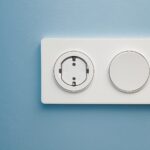Understanding air conditioning basics
Air conditioning systems are vital for maintaining comfortable indoor temperatures. These devices work by removing heat and moisture from the air. A typical air conditioner consists of four main components: compressor, condenser, evaporator, and expansion valve. Modern units offer features like programmable thermostats and energy-efficient modes. The average lifespan of an air conditioner is 15-20 years, depending on maintenance and usage. Proper sizing is crucial; an undersized unit will struggle to cool effectively, while an oversized one may lead to excessive energy consumption.
Choosing the right air conditioner for your space
Selecting an appropriate air conditioning system depends on various factors. Room size is a primary consideration; a general rule is 20 BTUs per square foot of living space. Energy efficiency ratings, such as SEER (Seasonal Energy Efficiency Ratio), help compare different models. Higher SEER ratings indicate better efficiency, with modern units ranging from 13 to 21 SEER. Wall air conditioners are suitable for single rooms, while central systems can cool entire buildings. Consider noise levels too; quieter units typically operate at 50-60 decibels.
Installation and maintenance tips
Proper installation is crucial for optimal air conditioner performance. Ensure there’s at least 12 inches of clearance around the outdoor unit for adequate airflow. Regular maintenance can extend your system’s lifespan and improve efficiency. Change or clean filters every 1-3 months, depending on usage. Schedule professional inspections annually, ideally before the cooling season begins. These check-ups typically cost between $70 and $200 but can prevent costly repairs down the line. Keep outdoor units free from debris and trim any nearby vegetation to maintain airflow.
Commercial air conditioning solutions
Commercial air conditioners differ from residential units in scale and complexity. These systems often use variable refrigerant flow (VRF) technology, allowing for simultaneous heating and cooling in different zones. Rooftop units are popular for commercial buildings, with capacities ranging from 3 to 50 tons. Energy management systems can reduce operating costs by up to 30% in large commercial setups. Regular maintenance is even more critical for these systems; neglect can lead to a 5-15% decrease in efficiency annually. Air conditioning and ventilation integration is crucial for maintaining indoor air quality in commercial spaces.





